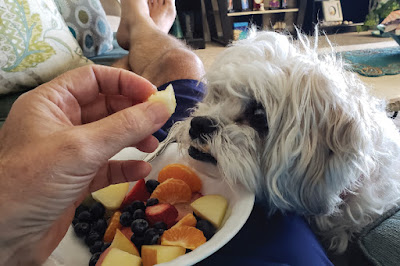If you’re a pet lover or owner, chances are you’re familiar with the challenging task that is raising a pet in a housing/apartment complex. Every such complex has its own set of rules for pet ownership, which are in place to ensure the harmony of the community and residents are expected to adhere to these rules. To make sure that pets are not discriminated against, the Animal Welfare Board of India has passed a set of laws for their safeguarding. Pet owners need to be familiar with these laws, as it is necessary to do so to avoid any discrepancies in your apartment complex.
Pet Laws Governing Pets in Apartments
- Banning Pets is Illegal - According to Section 9(k) Prevention of Cruelty to
Animals Act, 1960, it is illegal for housing complexes to pass pet bye-laws
that disallow pets. Not even a vote over the same validates the process, and no
congregation can pass any laws that go against the provisions outlined in
Section 9(k). Each being has a right to life according to the constitution, and
each citizen must be compassionate towards them.
- Discrimination is Prohibited - An apartment complex cannot discriminate against pets
based on their size, age, or breed. They also cannot use distressed behaviors
like excessive barking or whining to argue for a pet ban.
- Cruelty Against Animals is Punishable - An apartment complex cannot pass any rules or laws
that harass pets. Cruelty towards animals, both pets and strays, is a
punishable offence under Section 428 and Section 429 of the Indian Penal Code.
- Feeding Cannot be Prohibited - An apartment complex and its dwellers cannot ban one
or more residents from feeding stray animals in the complex.
- Use of Common Areas - An apartment complex cannot bar a pet from entering common areas such as lifts, parks, and lobbies, and cannot impose a fine for the same.
Responsibilities of a Pet Owner
While it is true that the general approach of an
apartment complex towards pets is important, the pet owner also has a certain
duty. As an owner, you should be aware of the rules and laws governing your
pet, and of the responsibilities you have when you’re with your pet in a
community.
Here are a few things to keep in mind when living in an apartment
complex with a pet.
- Training is Necessary - If you don’t train your pet, they won’t know how to
behave indoors or outdoors. Training your pet during their younger years,
teaching vital obedience commands and toilet training can save you a lifetime
of inconvenience. An untrained animal in an apartment complex may be
overwhelmed due to the sheer number of things happening at the same time, so
train your pet to make them comfortable in all social situations.
- Familiarization Brings Comfort - An apartment complex will have many strange faces and
smells, and your pet will need to safely interact with such elements in a
common area. Familiarize your pet with their surroundings and neighbours so
they don’t lash out.
- Vaccinations are Essential - Vaccinations provide safe, effective, cost-efficient,
and long-term protection against communicable diseases. Vaccinating your pet is
essential, as you live in a community, and nobody should be exposed to harmful
diseases due to owner negligence.
Here are a Few Basic Vaccinations for Dogs and Cats:
- For Dogs: Canine Parvovirus, Canine Distemper, Hepatitis, Rabies, Leptospirosis (Core).
- For Cats: Panleukopenia, Rhinotracheitis, Calicivirus, Rabies, Feline Leukaemia.
If you’ve adopted a pet and are unsure about their vaccination history, consider re-vaccinating them or get a Rabies Titer Test done to check for prior protection. - Adhering to Norms - If you’re a long-time pet owner, you should inquire
about the rules and regulations an apartment complex adheres to before moving
in. The current rules will give you some idea about how pet-friendly a space
is, and whether it has dedicated spaces or times for pets to roam around
outdoors. Make sure to stick to the laws and be polite if you accidentally
break one. Most disputes over space can be solved amicably if one keeps a cool
head.
- Cleaning Up After Yourself - Maintaining the cleanliness of general areas is
important in a community, and one of the first issues raised by residents in a
society is the mess created by pet excrement. You should clean up after your
pet when taking them outdoors to relieve themselves and correctly dispose of
the waste.
- Being an Accountable Pet Parent - Regardless of how well-trained your pet is or how good they behave off a leash, you should always keep your pet on a leash when outside your home. Common areas often have children and the elderly relaxing in them, and an over-enthusiastic pet can be cause for concern in such a space, especially since they aren’t aware of their strength. Socialize your pet from a young age so they are comfortable around other people and animals and can function in a space like a society without being overwhelmed. Make sure your pet gets plenty of exercise, and make sure your pet is well-fed in your absence if you're working during the day.
The rules and regulations of living space are in place
for a reason. Peaceful co-existence is possible, provided a little empathy is
displayed from both sides. As a resident, try to be patient with someone who is
still training their pet to behave better, and as an owner, try to teach your
dog the appropriate way of behaving in a shared space. Provided you keep your
pet on a leash, clean up after them, and train them, everything should be
smooth sailing.




